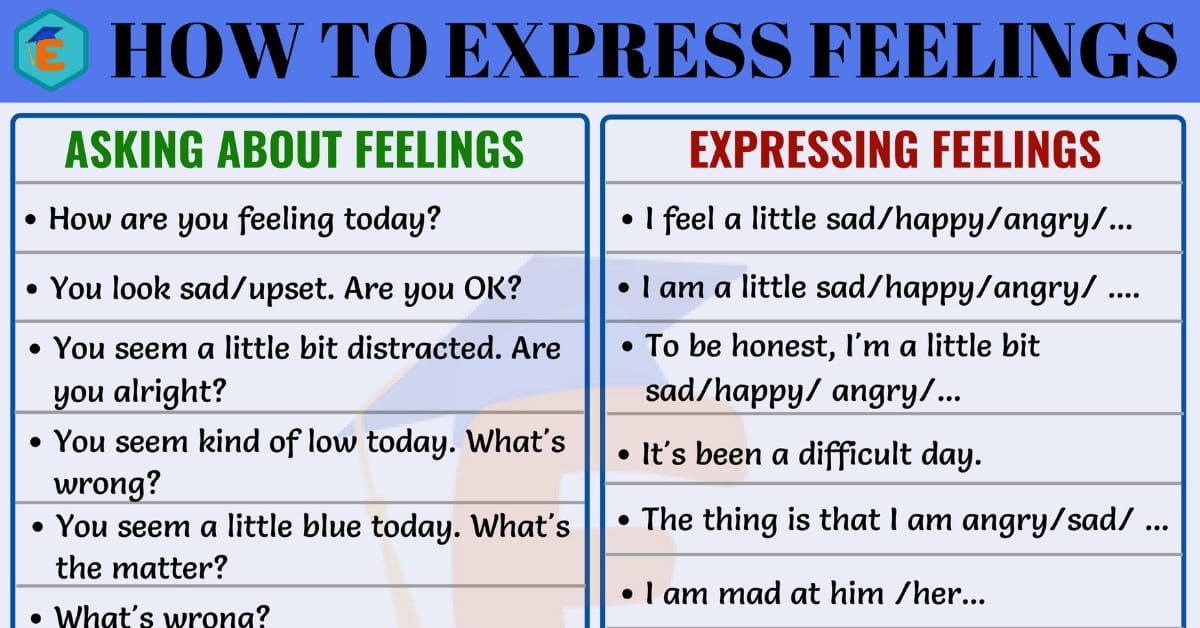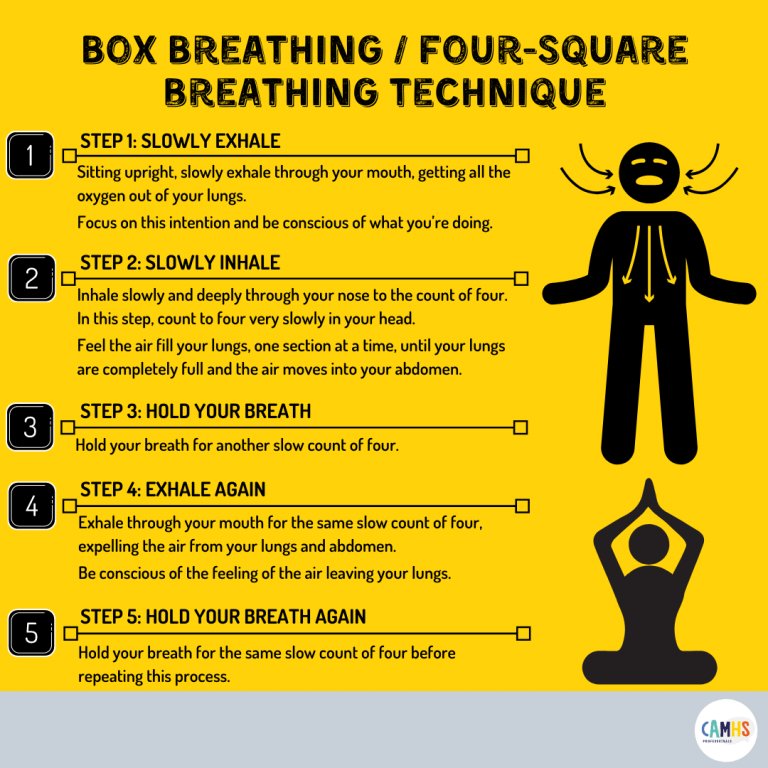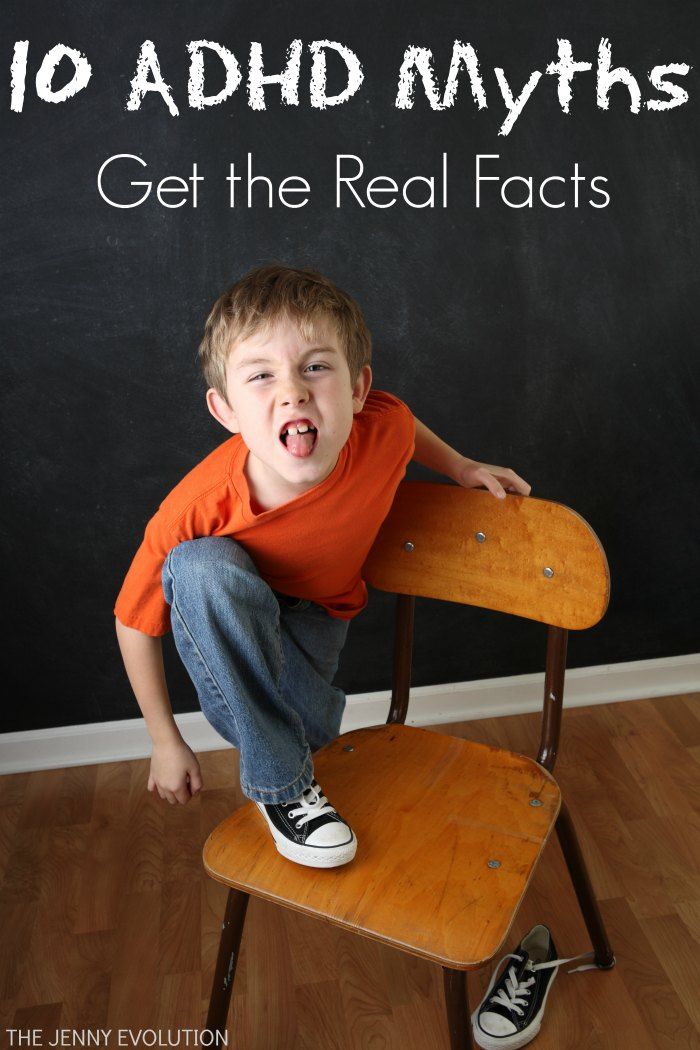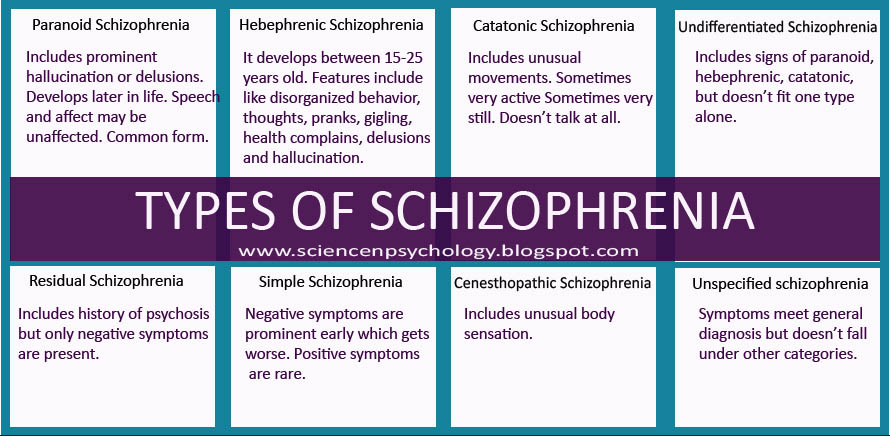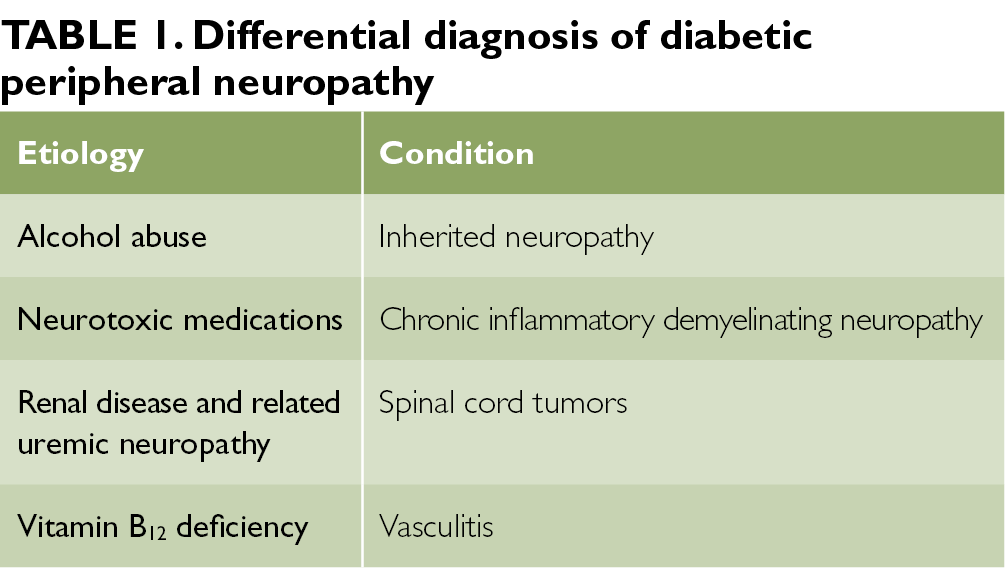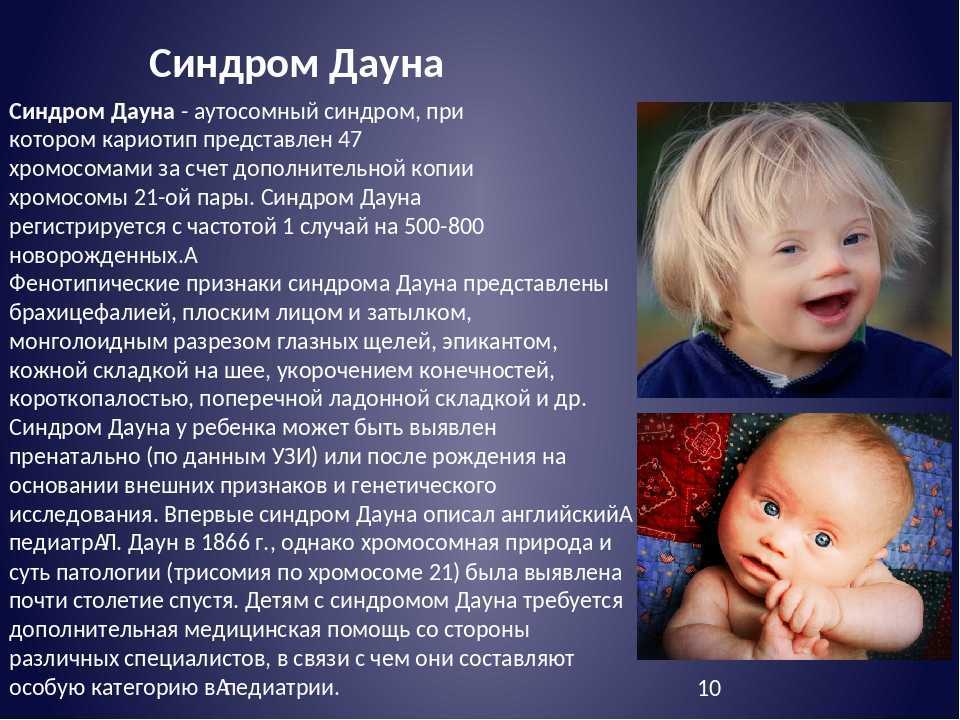Expressions of feelings and emotions
List of Emotions: 135 Words that Express Feelings
Categories of Emotions
The list of emotions a typical pre-K child understands may be limited to happy, mad, sad, and scared (Harter, S., & Buddin, B. J.), but as they grow, the list expands, and they develop a more nuanced vocabulary to explain how they feel.
Over the past 40 years, several frameworks have emerged to describe and categorize emotions. There is the Plutchik Wheel of Emotions, Ekmans’ Atlas of Emotions, and many others, but for this article, we are sharing a tree-like framework created by Dr. Phillip Shaver and his colleagues at the University of Denver.
In 1987, Shaver and his colleagues published Emotion Knowledge: Further Exploration of a Prototype Approach where they outlined a three-level hierarchy of emotions and categorized words within that hierarchy. In the paper, they identified six primary emotions: Anger, Fear, Joy, Love, Sadness, and Surprise – And they identified 25 secondary emotions and 135 words that represent more descriptive tertiary emotions.
Here is the complete list of emotions and how they are categorized:
- Anger
- Disgust: Contempt, disgust, revulsion
- Envy: Envy, jealousy
- Exasperation: Exasperation, frustration
- Irritation: Aggravation, agitation, annoyance, grouchiness, grumpiness, irritation
- Rage: Anger, bitterness, dislike, ferocity, fury, hate, hostility, loathing, outrage, rage, resentment, scorn, spite, vengefulness, wrath
- Torment: Torment
- Fear
- Horror: Alarm, fear, fright, horror, hysteria, mortification, panic, shock, terror
- Nervousness: Anxiety, apprehension, distress, dread, nervousness, tenseness, uneasiness, worry
- Joy
- Cheerfulness: Amusement, bliss, cheerfulness, delight, ecstasy, elation, enjoyment, euphoria, gaiety, gladness, glee, happiness, jolliness, joviality, joy, jubilation, satisfaction
- Contentment: Contentment, pleasure
- Enthrallment: Enthrallment, rapture
- Optimism: Eagerness, hope, optimism
- Pride: Pride, triumph
- Relief: Relief
- Zest: Enthusiasm, excitement, exhilaration, thrill, zeal, zest
- Love
- Affection: Adoration, affection, attraction, caring, compassion, fondness, liking, love, sentimentality, tenderness
- Longing: Longing
- Lust: Arousal, desire, infatuation, lust, passion
- Sadness
- Disappointment: Disappointment, dismay, displeasure
- Neglect: Alienation, defeat, dejection, embarrassment, homesickness, humiliation, insecurity, isolation, insult, loneliness, neglect, rejection
- Sadness: Depression, despair, gloom, glumness, grief, hopelessness, melancholy, misery, sadness, sorrow, unhappiness, woe
- Shame: Guilt, regret, remorse, shame
- Suffering: Agony, anguish, hurt, suffering
- Sympathy: Pity, sympathy
- Surprise
- Surprise: Amazement, astonishment, surprise
Teaching Emotional Literacy
Featured Lessons
To assist you as you help students understand emotions, we have created a series of lessons, activities worksheets, and printables.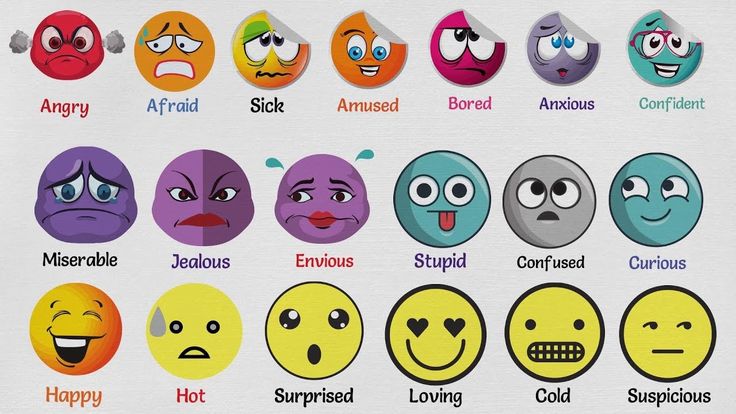 Many of these include characters and scenarios from our online SEL interventions. While you aren’t required to use our online programs in order to use the lessons, you can request a Free Trial here.
Many of these include characters and scenarios from our online SEL interventions. While you aren’t required to use our online programs in order to use the lessons, you can request a Free Trial here.
Emotional Spectrum
It’s important that students learn to identify the degree of emotion they are feeling and use words that are more descriptive than mad, sad, happy, etc.
In these worksheets, students will read emotion words that describe the range of one emotion and identify situations that make them feel that way.
Identifying Emotions Activity
Identifying and managing feelings requires that we respond to emotional situations in a socially acceptable manner, and research shows that children who are good at identifying and managing their emotions feel better about themselves and have more successful friendships.
This identifying emotions activity will students learn to recognize the physical signs associated with different emotions.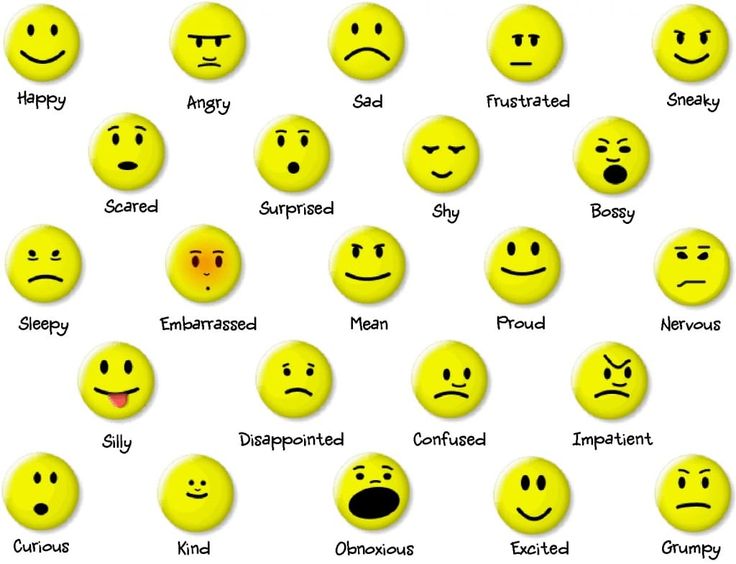
Anger Thermometer
Everyone feels angry from time to time, and it can be an overwhelming emotion. And like other emotions, anger comes in different strengths or degrees.
Using this anger thermometer worksheet, students will reflect on situations where they feel angry and brainstorm ideas for how to calm down.
Emotion Faces
These emotion faces worksheets will help your students evaluate facial expressions and associate those expressions with a range of emotions.
In the lesson, we use characters from our online SEL game, Adventures Aboard the SS GRIN to illustrate the following feelings: angry, anxious, bored, confused, happy, impatient, sad, scared, and surprised.
Additional Emotional Literacy Lessons and Activities
- Feelings Wheel: A daily check in to help you understand how your students are feeling
- The Worry Scale: Coping strategies for anxiety, worry, and fear
- Mood Ring Colors: Another worksheet to help students identify emotions
- Feelings Faces: A free match the emojis printable
- Charades: An emotion identification activity based on the game, Charades
- Telephone Game: Recognizing facial expressions and body language
Lesson Extension When Using Centervention Online Programs
Each day, when a student log in to their online Centervention account, they will be asked how they are feeling.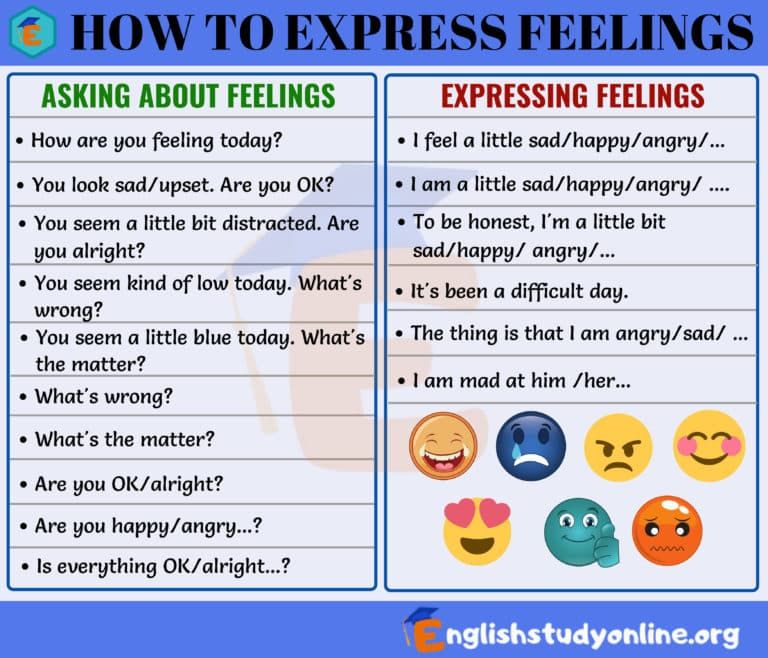 They can select one of the following five options: Mad, Sad, Worried, Okay, Happy.
They can select one of the following five options: Mad, Sad, Worried, Okay, Happy.
All of these student emotion check ins are recorded and displayed in your educator dashboard where you can determine, at a glance, which students may need additional support.
And for those students that need additional support, there are 6 scenes in Zoo U and 3 scenes in Zoo Academy that have a primary focus on Emotion Regulation.
Would You Like To Receive Free SEL Lessons Each Week?With a Centervention Account, you will receive free lessons and a free trial for our online SEL programs.
Please Create My Account
Feelings Wheel Worksheet to Help Students Explore Emotions
We all struggle to put our feelings into words, and it can be even more challenging for kids. When it happens, it can be frustrating and cause a domino effect. Kids may have a poor reaction, an outburst, or blame someone else simply because they don’t know how to express what they are feeling.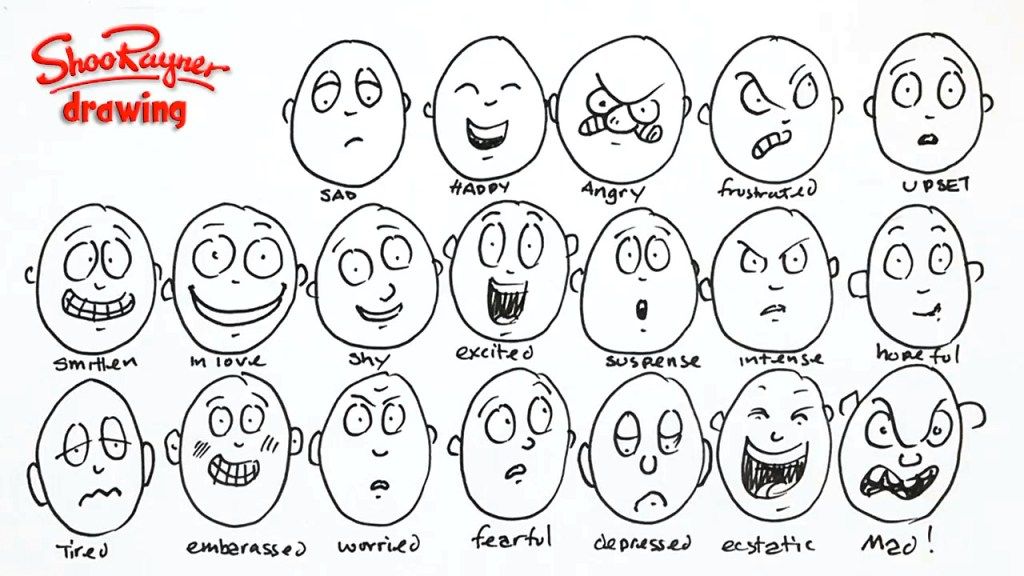 This lesson uses a Feelings Wheel to helps students indicate how they are doing at that moment, or that day, without having to say a word.
This lesson uses a Feelings Wheel to helps students indicate how they are doing at that moment, or that day, without having to say a word.
Note: It may be helpful to have this list of emotions as a resource to reference for improving emotional literacy.
Recommended Grade Level: Elementary
SEL Skill(s): Communication, Emotion Regulation
Duration: 30 minutes
Materials:
- Feelings wheel worksheet
- Colored pencils
- Clothes pin or push pins
- Optional: Laminate feelings wheel after students complete worksheet
Prompt: “Everyone has different feelings and sometimes it’s hard to explain how we are feeling and what we may need at that moment.
How are you feeling today? I’m feeling happy because I had my favorite breakfast [pancakes] this morning.
* Hand out the worksheet *
Now, I’d like you to think about the following: ‘How am you feeling today? Are you feeling sad? Angry about something? Happy? Just blah/OK?’
Sometimes checking in with a friend or teacher and letting them know how you’re doing can make all of the difference.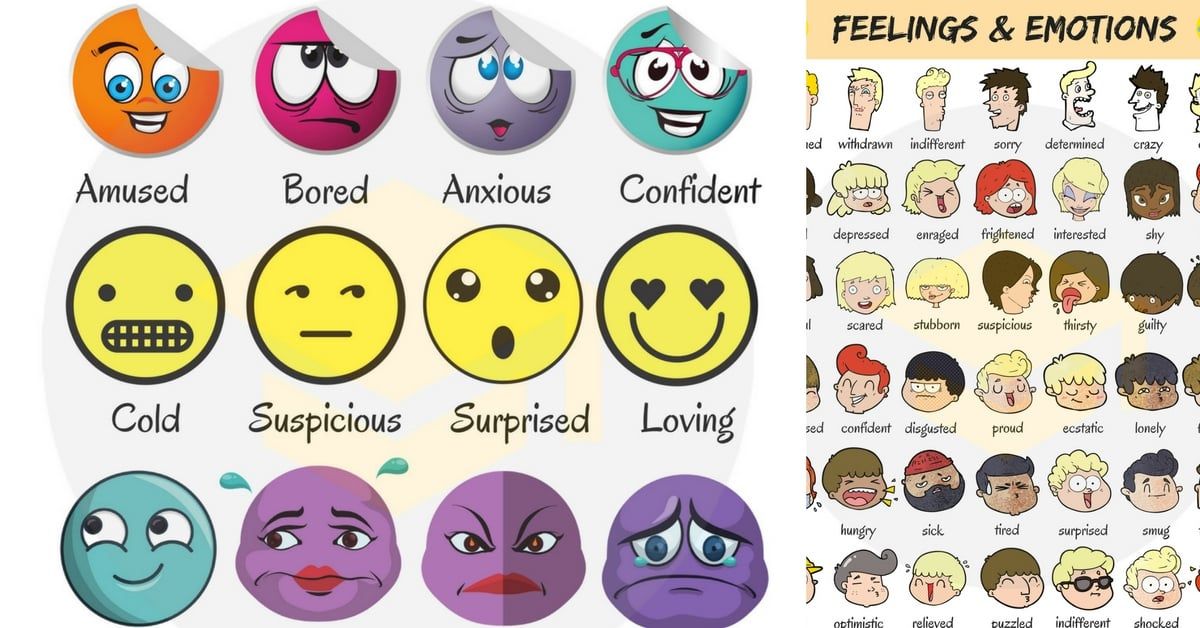 But sometimes, it’s hard to say how you’re feeling with words. Today, we’re going to make a feelings wheel to make it easier to tell someone how you are feeling.
But sometimes, it’s hard to say how you’re feeling with words. Today, we’re going to make a feelings wheel to make it easier to tell someone how you are feeling.
Start by coloring in your emojis. Once you’re done coloring, cut out your wheel, and I’ll pass out clothes pin [or push pins]. Think how you’re feeling right now and put the pin on that part of the wheel.”
* Give students time to work *
Once students complete their wheels, hand out the corresponding worksheet.
Prompt: “Now, we’re going to write about how we are feeling today and draw a picture to represent that feeling. It can be something that made you feel happy today or something that made you mad.”
* Give students time to work *
* Group discussion *
Talk about what we can do with our feelings.
- If I’m feeling happy, I can do something nice for a friend or make them laugh with a funny joke. I can spread that happiness.
- If I’m feeling sad, what can I do to maybe make myself feel better?
Feelings Wheel Lesson Extension When Using Centervention Online Programs
Each day, when a student log in to their online Centervention account, they will be asked how they are feeling.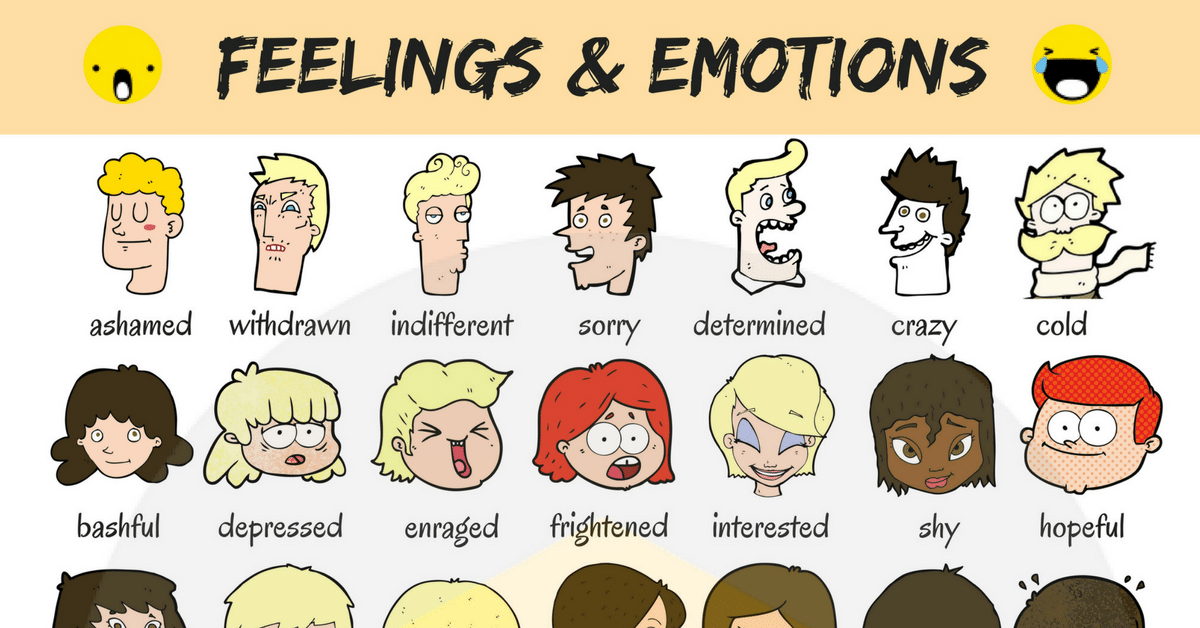 They can select one of the following five options: Mad, Sad, Worried, Okay, Happy.
They can select one of the following five options: Mad, Sad, Worried, Okay, Happy.
All of these student emotion check ins are recorded and displayed in your educator dashboard where you can determine, at a glance, which students may need additional support.
Additional Resources
Books
- The Lonely Little Emoji by Harry Harmon
- H is for Happy by Evan Nimke (for younger students)
- The Way I Feel by Janan Cain
With a Centervention Account, you will receive free lessons and a free trial for our online SEL programs.
Please Create My Account
Expression of feelings, manifestation of emotional states
Feelings often want to be expressed, emotions and emotional states are often simply torn from the soul. Why, why? As for the goals or main functions of expressing emotions and feelings, there are three of these functions:
- Communication, communication, transmission of certain messages about oneself and one's emotional state.
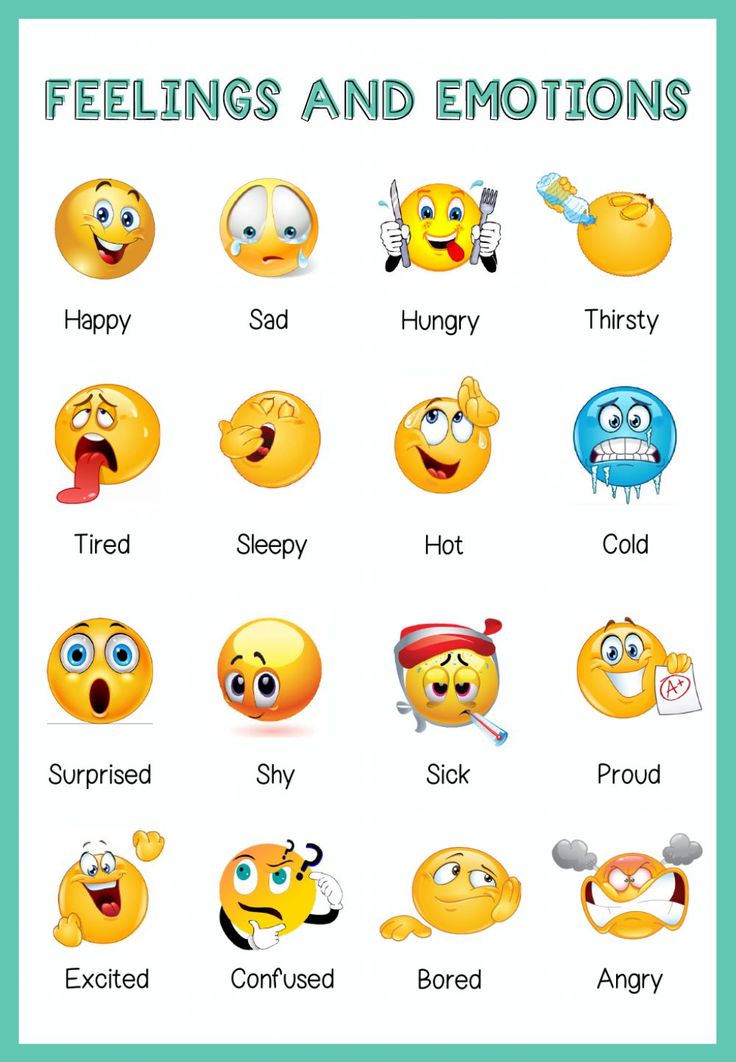 Sometimes it is important that people, especially those close to you, understand you. This helps better interaction and good relations. In this case, the expresser of feelings, as a communicator, requires adequate wording of the message about his feelings plus emotional expressiveness. See →
Sometimes it is important that people, especially those close to you, understand you. This helps better interaction and good relations. In this case, the expresser of feelings, as a communicator, requires adequate wording of the message about his feelings plus emotional expressiveness. See → - Impact on others or partner. The cry of a child is not just current information for regular consideration, it is a command for an immediate response. Emotions don't just convey messages, emotions infect and energize, demand and inspire, attract and repel. See →
- Emotional response, release from internal tension. People often express their feelings because they overwhelm and create tension. In the process of emotional response, expressing feelings, inner relief is achieved. The internal task here is emotional response, although in reality the matter is more often limited to an unconstructive outburst of emotions. nine0006
How to deal with this? - Very different, because there are no emotions and feelings in general, everything is very specific.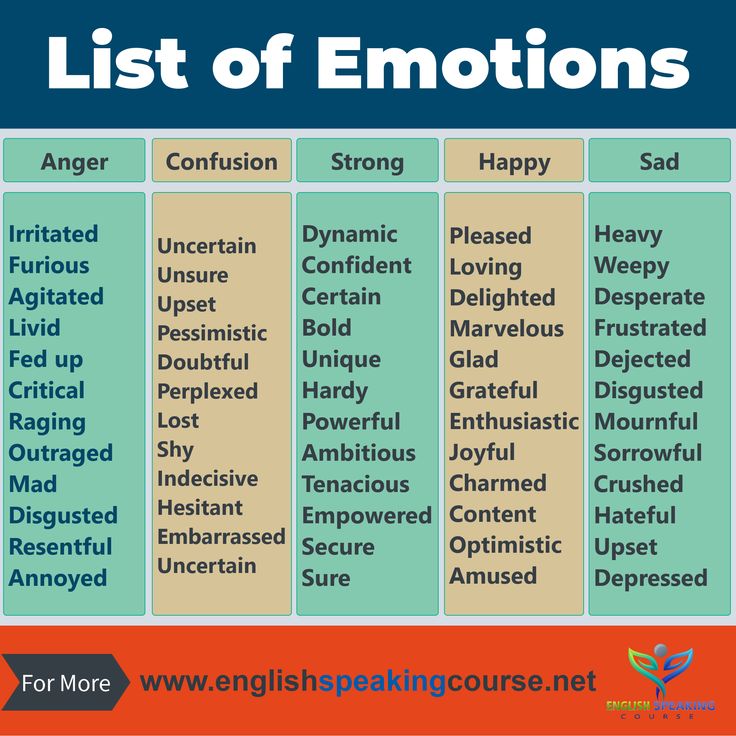 Some emotional manifestations please everyone and are good for health, other affective outbursts are harmful to health, business, and relationships. Here we are not talking about the fact that some emotions are bad in themselves, rather, you need to be attentive to the specific form, in what context and for what purpose this or that feeling is expressed.
Some emotional manifestations please everyone and are good for health, other affective outbursts are harmful to health, business, and relationships. Here we are not talking about the fact that some emotions are bad in themselves, rather, you need to be attentive to the specific form, in what context and for what purpose this or that feeling is expressed.
If we try to distinguish more or less pure forms of a variety of expression of feelings, then the main forms can be distinguished:
- Outburst of emotion - free, without obstacles and indiscriminately, release of emotional tension in speech, expression and actions. These are both cries of joy and an explosion of hatred: everything that has come from within spills out here.
- You-statement - speaking about the Other from the position of I. Evaluating the Other or splashing out feelings about the Other, as I see it: from “You are magnificent” to “You are a dumbass!”. Sometimes an energetic You-statement turns out to be a way to splash out emotions.
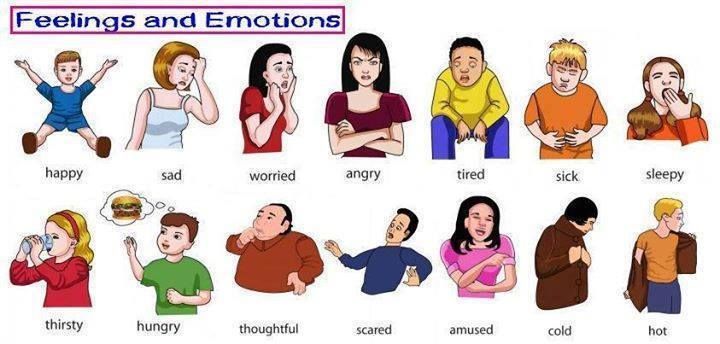 nine0005 I-statement - a statement when I speak about my state and my feelings in the first person, from the first (or zero) position of perception. “I’m afraid”, “I’m ready to explode when nothing comes out of me!”.
nine0005 I-statement - a statement when I speak about my state and my feelings in the first person, from the first (or zero) position of perception. “I’m afraid”, “I’m ready to explode when nothing comes out of me!”. - I-message - an appeal in which a person speaks to another about his state, feelings and desires without accusations and pressure. I-messages, like I-statements, can be part of emotional venting.
How easy is it to see and distinguish in life? - Difficult. People rarely think about why and how they express their feelings and manifest their emotional states: most often this happens impulsively, without thought, often being only automatism and a product of habit. As a result, the expression of feelings is usually a salad in which everything is mixed: both emotional response, and communication, and this or that method of influence. However, the higher the psychological culture and personal development of a person, the more awareness and control a person approaches the expression of his own emotions and feelings, the more the expression of emotions has a specific purpose and addressee.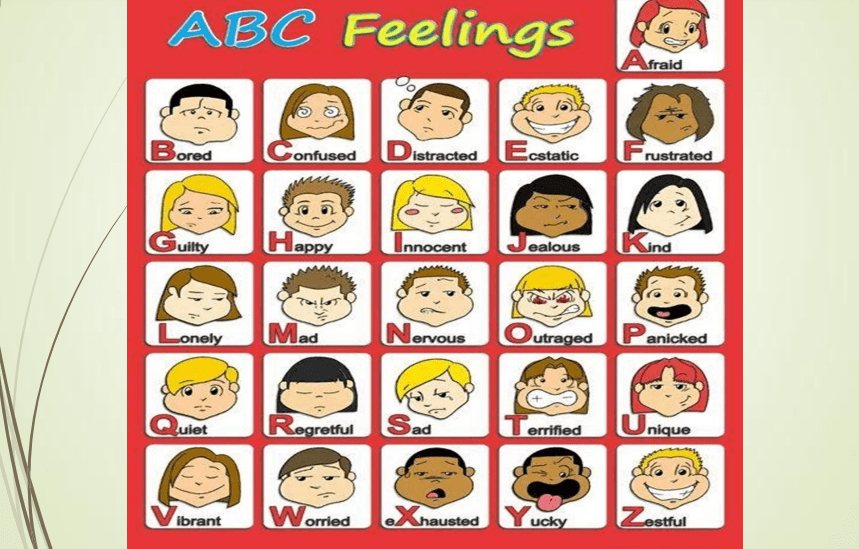 nine0003
nine0003
It seems that for a reasonable person, the rule can be a guideline: "Any emotion must be targeted and expedient."
Catharsis: Reducing Violent Motivations Through Aggressive Outbursts
Leonard Berkowitz, in Aggression: Causes, Consequences, and Control, critically analyzes traditional concepts of "feeling" as a way to release negative emotions, see →
Expression of emotions and feelings
03/30/2013 nine0003
Experiences of emotional states - joy, love, friendship, sympathy, favor or pain, grief, fear, hatred, contempt, disgust, etc. are always accompanied by appropriate external or internal expressions.
It is enough to get emotionally excited, it immediately covers the whole organism. External expressions of emotions and feelings are manifested in movements, postures, motor and vocal facial expressions, intonations of speech, eye movements, etc. The internal or visceral manifestation of experiences is clearly manifested in the heartbeat, respiration, blood pressure, changes in the endocrine glands, digestive and excretory organs.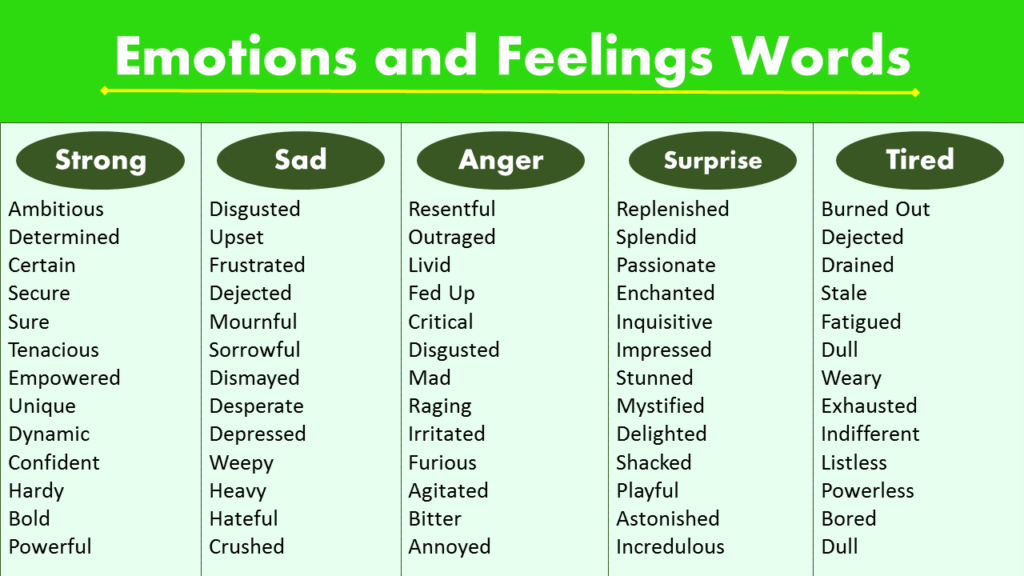 nine0003
nine0003
These inner experiences are asthenic or sthenic , that is, they manifest themselves through suppression or excitation.
External or expressive expression of emotions and feelings is noticeable even in infants. But they are still little differentiated. With experience, especially with the development of speech by a child, the expressive expression of emotions and feelings acquires various shades. Their wealth is so great that there are about 5000-6000 words in the language, which mainly convey experiences. nine0003
With the experience and development of speech, the child gradually masters expressive expressions, to some extent delays them, but this does not mean that emotion is inhibited by this. P. K. Anokhin believes that in such cases only certain peripheral components of emotions are inhibited - movements, facial expressions, the emotion itself, once it has arisen, inevitably spreads to other, mainly visceral components.
However, the formation of endurance in children has a positive effect on their life and relationships in the team.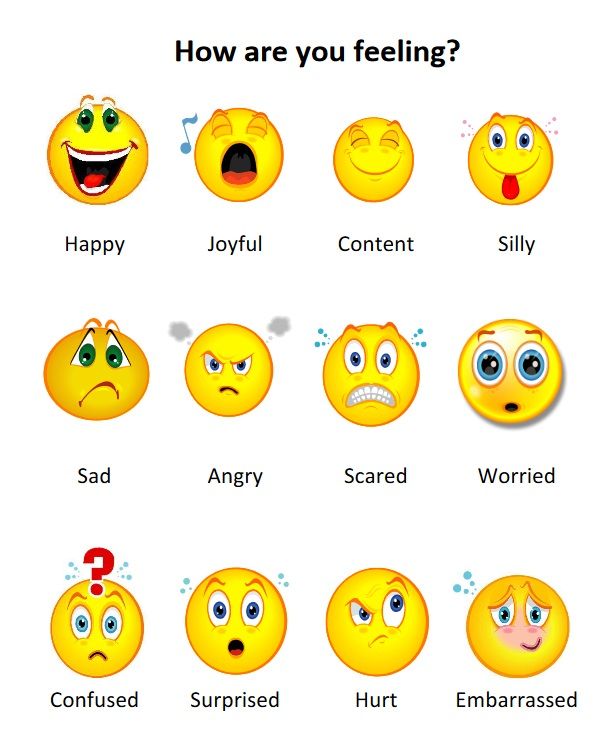 nine0003
nine0003
With the mastery of expressive ways of expressing emotions and feelings, the ability to perceive and understand various forms and shades of expression of experiences, the ability to identify them are formed.
Along with this, the ability to use expressive ways of expressing feelings in order to influence others develops. This ability is necessary for an artist, and especially for a teacher, who, having recognized, thanks to observation, internal states and experiences, can lead them, influence others with an educational purpose with his own expressively expressed feelings. nine0003
Depending on the circumstances and condition of a person, his preparedness for experiences, emotions and feelings can be expressed in different ways. A feeling of fear, for example, can cause an asthenic reaction - stiffness, shock, or a sthenic reaction. Grief can cause apathy, inaction, confusion, or appropriate vigorous action.
Forms and intensity of revealing emotions and feelings largely depend on upbringing, the level of human culture, traditions and customs.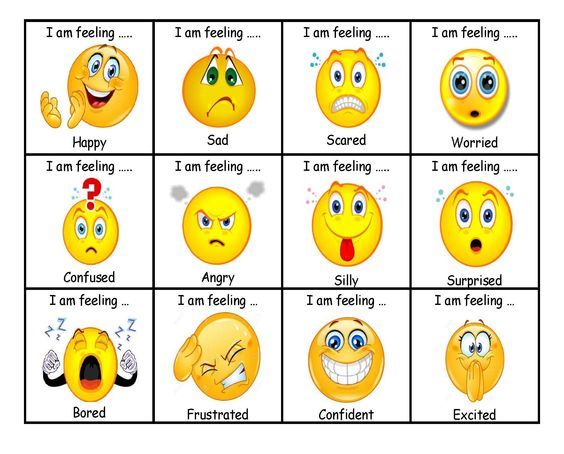 This is especially reflected in their expression in external ways - facial expressions, movements, gestures. Their internal expression (heartbeat, respiration, action of the endocrine system) occurs relatively independently of social factors. nine0003
This is especially reflected in their expression in external ways - facial expressions, movements, gestures. Their internal expression (heartbeat, respiration, action of the endocrine system) occurs relatively independently of social factors. nine0003
Key words: Emotions, Feelings
Source: Maksimenko S.D., General psychology
| Related materials |
|---|
| Classification of emotions and feelings Efimova N.S., Fundamentals of General Psychology |
| Higher emotions and feelings Enikeev M.I., General and social psychology |
| Development of emotions and feelings Efimova N.S., Fundamentals of General Psychology |
| General patterns of emotions and feelings Enikeev M. |
